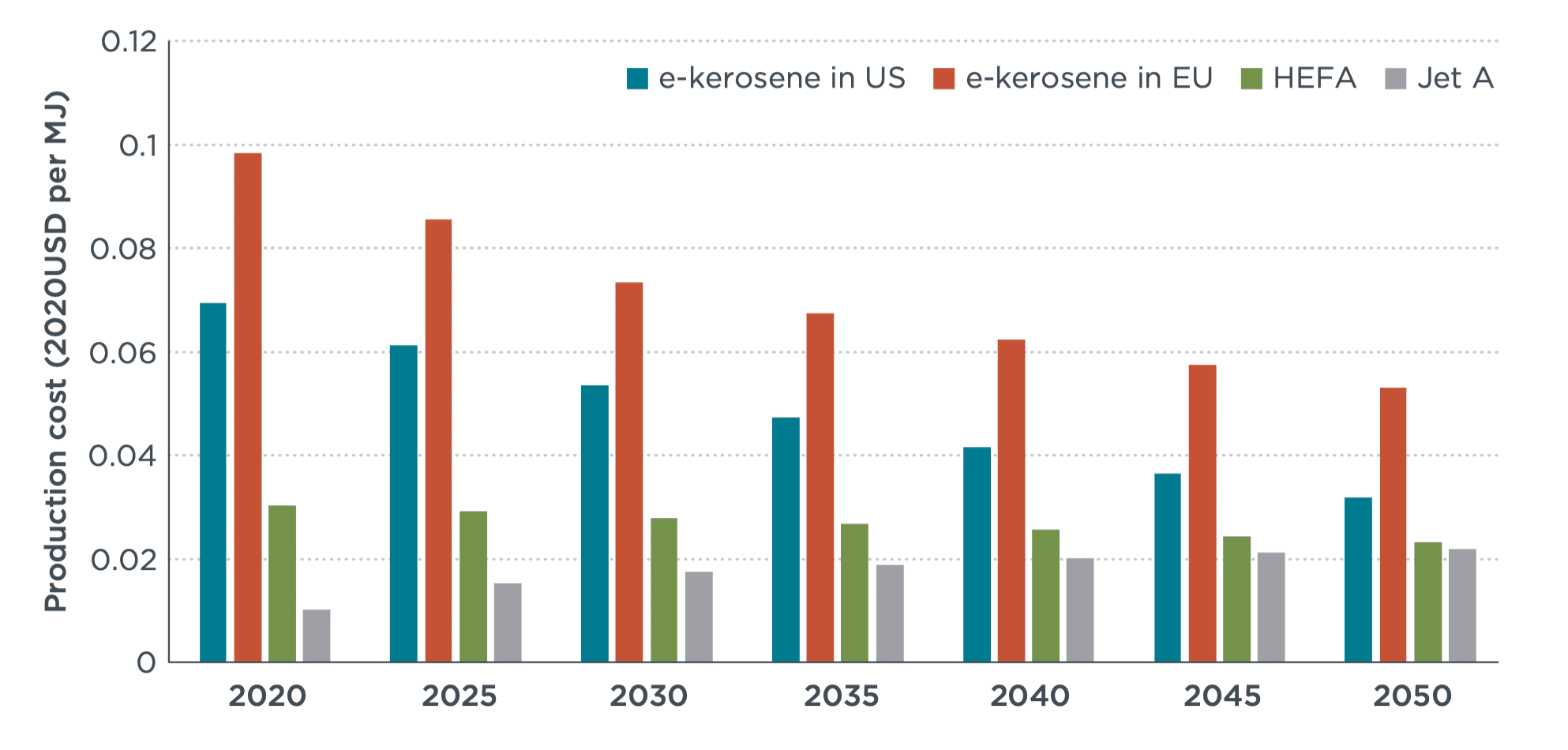Cost of renewable hydrogen produced onsite at hydrogen refueling stations in Europe
Working Paper
Current and future cost of e-kerosene in the United States and Europe
E-kerosene, produced by combining carbon dioxide (CO2) and hydrogen derived from water electrolysis, is a type of sustainable aviation fuel (SAF) that is compatible with conventional fueling infrastructure and combustion engines. When renewable electricity is used to electrolyze water, e-kerosene could have close-to-zero greenhouse gas (GHG) emissions, as long as the renewable electricity is generated additionally, rather than displacing existing uses. The International Civil Aviation Organization (ICAO) has proposed SAFs as a key measure to achieve GHG emission reduction in aviation and several government bodies have provided support for SAFs, especially e-kerosene, in recent years. The aviation industry has also included e-kerosene in its decarbonization roadmaps and has begun to produce e-kerosene.
This study examines, from an economic perspective, the potential role of e-kerosene in decarbonizing the aviation sector. We estimate the cost of producing e-kerosene in the United States and the EU from 2020 to 2050. We consider renewable electricity as the energy source for e-kerosene production and assume CO2 is provided from a point source. We estimate the average e-kerosene production cost in the United States to be $8.80 per gallon (€2 per liter) in 2020, decreasing to $4 per gallon (€0.9 per liter) in 2050. We estimate the average e-kerosene production cost in the EU to be $12.40 per gallon (€2.8 per liter) in 2020, decreasing to $6.70 per gallon (€1.5 per liter) in 2050. The EU has higher e-kerosene costs due to more expensive renewable electricity.
Even though this study assumes low CO2 costs and a combination of technologies that gives the lowest e-kerosene cost (i.e., renewable source, electrolyzer type, and grid or direct connection mode), and despite assuming mid-level cost reductions in the future, e-kerosene is not projected to be cost-competitive with fossil kerosene before 2050. Our estimates show that the 2020 production cost of e-kerosene is 7x (U.S.) or 10x (EU) fossil kerosene. This price gap decreases substantively to 1.5x (U.S.) or 2.5x (EU) in 2050. Thus, financial incentives are necessary for large-scale adoption of e-kerosene so that it can play a role in aviation decarbonization, especially in the near term. We estimate that a carbon price of $400 per tonne CO2e in the United States or $630 per tonne CO2e in the EU can make e-kerosene cost competitive in 2030, decreasing to $110 per tonne CO2e (United States) or $350 per tonne CO2e (EU) in 2050. High incentives in the early years can help pave the way for more and cheaper e-kerosene in the long term.

Figure. Estimated e-kerosene production cost in the United States and the EU, compared to hydroprocessed esters and fatty acids (HEFA) and fossil Jet A fuel
